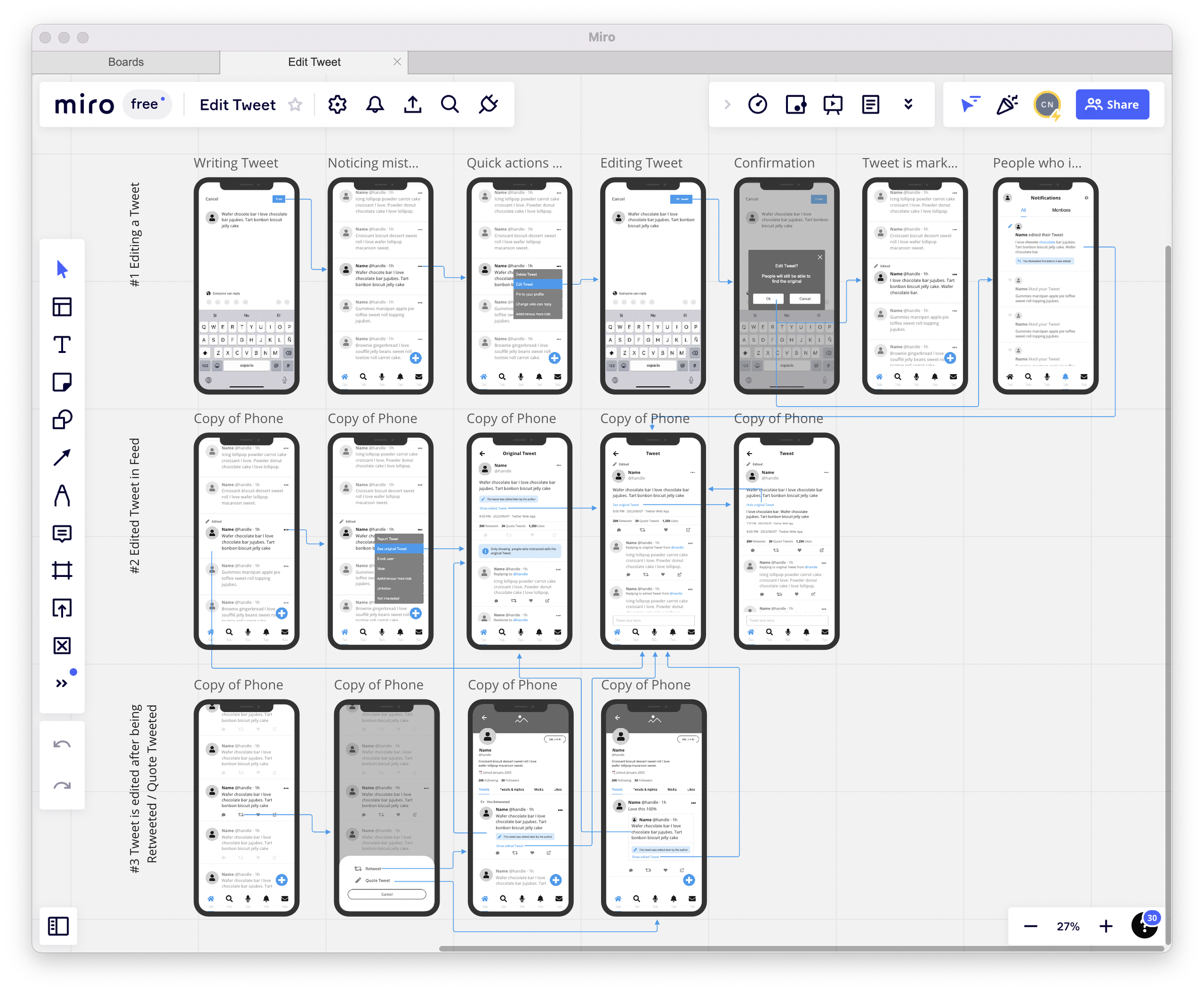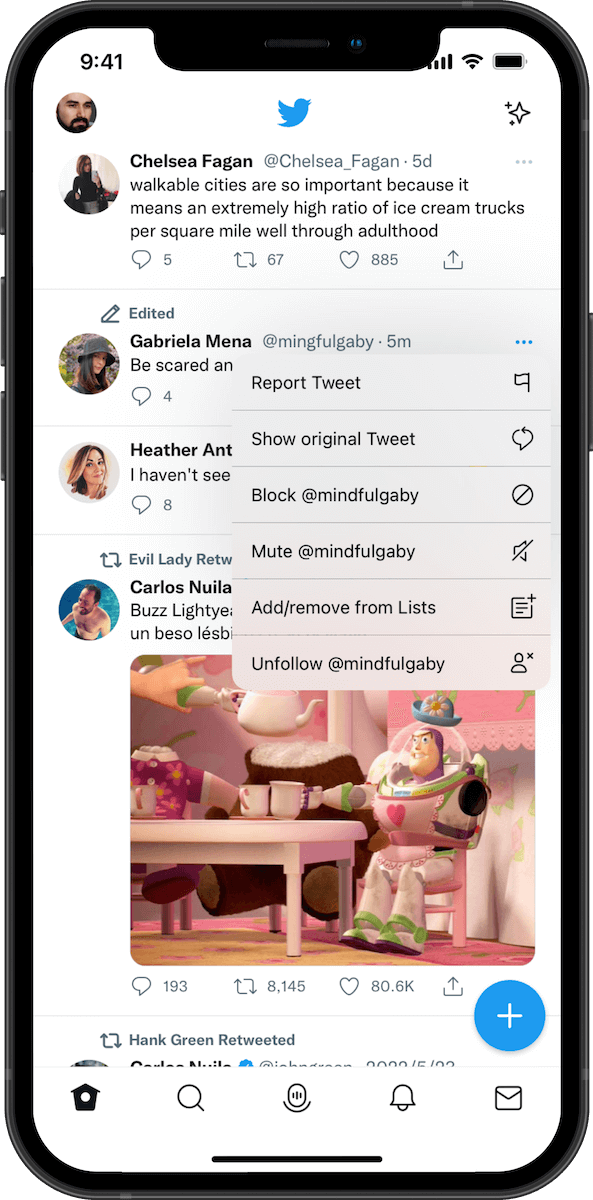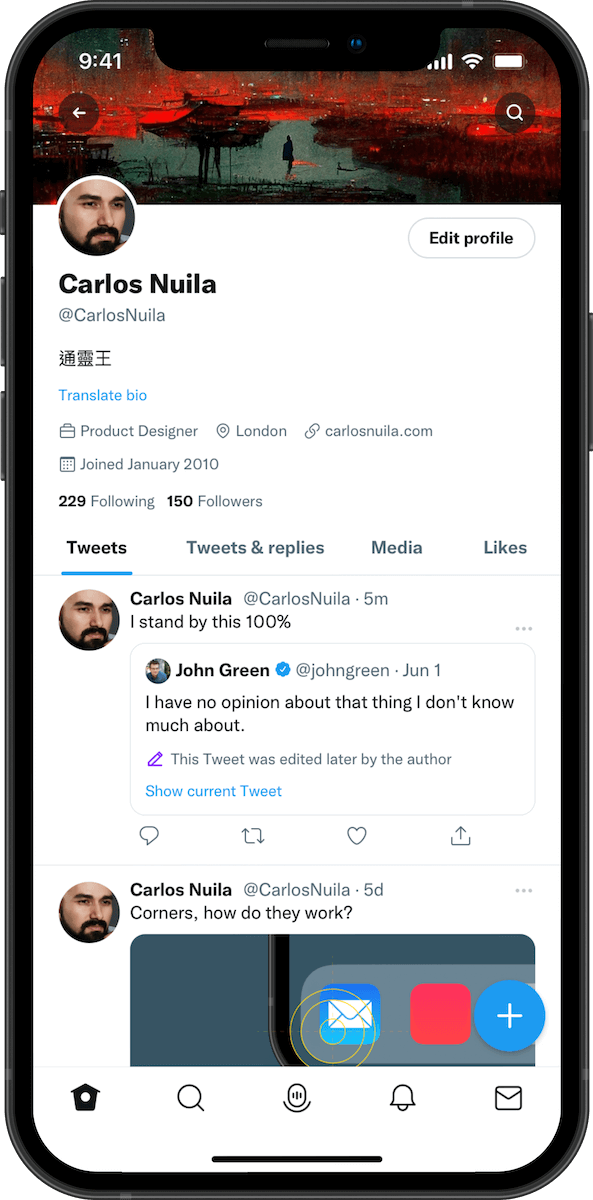An edit feature for Twitter that does not end the world as we know it
In collaboration with mindfulgaby ↗
• • •
Earlier this year Twitter announced in a Tweet that they have been working on an edit feature for their platform.
now that everyone is asking…
— Twitter Comms (@TwitterComms) April 5, 2022
yes, we’ve been working on an edit feature since last year!
no, we didn’t get the idea from a poll 😉
we're kicking off testing within @TwitterBlue Labs in the coming months to learn what works, what doesn’t, and what’s possible.
To say that this feature has been widely requested would be an enormous understatement; so much so that Elon Musk was touting the feature as an obvious improvement that could be made after buying Twitter. Former CEO Jack Dorsey on the other hand is not so hot on the feature. Appearing on a Tech Support video for Wired, Dorsey had this to say about the feature: “we’ll probably never do it”. Dorsey appears to be concerned about the feature’s potential for exploitation and even highlights a few specific cases they considered, such as what would happen when a Tweet is widely Shared only to be edited to something completely different afterwards?
Starts at 2:57There are, of course, many concerns with implementing a feature like this on a product with the scale of Twitter. The company really needs to be mindful of the opportunities for exploitation it might open up if the feature is not implemented with great care.
Pros and cons
There are many obvious use cases for an edit button on Twitter, like editing and embarrassing tpyo or fixing a broken link. These fairly harmless scenarios are what most people think about when requesting the feature. This is also the use case that Elon Musk was alluding to in his “Do you want an edit button?” poll
Do you want an edit button?
— Elon Musk (@elonmusk) April 5, 2022
However, we must note that the negative scenarios are a big cause for concern. For instance, if the feature were to be implemented in a similar way to editing posts on Facebook, it could open the door for all kinds of shady behaviors like this gem from march 2022: Crypto Scammers Edited 10 Years of Facebook Posts to Appear Legit. With that in mind let’s go ahead and compare the pros and cons.
Pros:
✔ People can correct small mistakes in a Tweet without losing the engagement they have received (likes, replies, etc.)
✔ Editing is more visible than replying to a Tweet with an amendment
✔ It gives people the ability to maintain a perfectly crafted feed
Cons:
❌ It can be used as a tool to gaslight people
❌ If Tweets can be changed, it may empower people to disseminate abusive or reprehensible content in a consequence-free way
❌ It can be hijacked to make people spread messages they were not intending to share
While the benefits of this feature would be nice to have, the downsides are downright disastrous. Despite this Twitter seems to be going ahead with it so…
We’re beating Twitter to the punch!
Not in the sense that we’re making our own platform with blackjack and editing *cough* Truth Social *cough*, we mean it in the sense that mindfulgaby and I have teamed up to design this feature in a way that hopefully (1) achieves the intended goals of the people that want it for legitimate reasons, and (2) minimizes the negative effects of bad actors trying to exploit it.
Think of this post as a measuring stick against which we will evaluate the upcoming edit feature.
The main concept:
After careful consideration of the potential issues, we came up with these requirements for the feature:
Tweets can be edited once within a short window of being posted
Tweets need to be clearly marked as edited
The original version of the Tweet needs to remain discoverable
People can not be made to spread information without their knowledge
Editing a Tweet
In 2012 Peter Bray estimated the half life of a Tweet to be 18 minutes, that means that half the Retweets for any given Tweet are most likely to happen within the first 18 minutes of being posted. We set the upper time limit for editing a Tweet at 15 minutes. To edit a Tweet, the author can select “Edit Tweet” from the quick action menu. This will open the “compose” screen pre-populated with the original content of the Tweet, from there the author can proceed to edit the Tweet. After editing is done they can tap on the “Edit Tweet“ button to submit their changes, they will then be presented with an alert letting them know that editing creates a “new version” of a Tweet, and that the original version will still be accessible for others to find.
The goal of having the original version of the Tweet still be discoverable is to preserve transparency and accountability. Having a record of what a Tweet said before may deter people from behaving badly or abusing others.
Seeing an edited Tweet
If a Tweet has been edited, it will show a pencil icon with the word “Edited” above the name and the handle, similar to the way Likes and Retweets are displayed now.
Finding the original Tweet
If the Tweet is marked as edited, the person seeing it can select “Show original Tweet” from the quick action menu. The original Tweet will be shown in a “read-only” mode, which means that it can't be interacted with (replies, retweets, likes, and shares). In the interest of maintaining transparency and accuracy this screen will show how people interacted with the Tweet before it was edited.
On the other hand, tapping on the Tweet will open the regular expanded view. On this screen people will have the option to See/Hide the original Tweet, similar to how translating works in the app now. Furthermore, the replies below will specify which version of the Tweet they are replying to.
Retweets and Quote Tweets
Having changes propagate everywhere a Tweet can be seen is one of the obvious ways the edit feature can be exploited. First you Tweet something that compels people to Retweet, then you edit the original to make it seem as if people are Retweeting something different. To combat this, we’ve decided it’s best to respect the original intent of the people Retweeting and Quoting. This is important because these actions can be interpreted as endorsements for the message being conveyed in the Tweet. After all, Retweets and Quote Tweets bear the name of the sharer; so it is important that their intentions are respected, and that things do not change without their knowledge.
When a person edits a Tweet, the existing Retweets will not change their contents. Instead Retweets/Quote Tweets will show a disclaimer that reads “This Tweet was edited later by the author”.
For Retweets, interactions will be disabled because the outdated Tweet becomes read-only. Both Retweets and Quote Tweets will have a link that takes people to the current Tweet.
Notifications
People who interacted with a Tweet before it was edited will be notified. This is because we want to give people the chance to rescind their likes, delete their replies, or take back their Retweets/Quote Tweets if they disagree with the contents of the edited Tweet. The notification will highlight what part of the Tweet has changed, and tapping it will take people to the current Tweet’s expanded view.
Is that all worth it?
That is up to Twitter to decide. The platform has changed relatively little over the years, introducing a feature on this scale will be a major change to the way the platform works right now. Perhaps its simplicity is part of the magic and something that needs to be protected. Philosophical debates aside, there is also the business angle. Editing will be made available first to Twitter Blue members, and it’s unknown as of yet whether it will be released to the public in general.
For our part, we believe the amount work needed for the feature to be acceptable is not justified by the benefits gained. Maybe Jack Dorsey had it right from the start.
It was still fun designing it though.
• • •
Get the Screens
All the UI screens used in this article were drawn from scratch using Sketch















